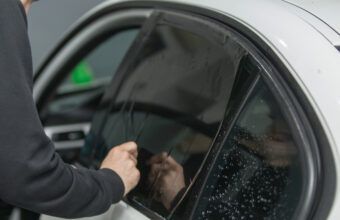When it comes to removing window tint, many DIY enthusiasts turn to household remedies for a cost-effective solution. One such method that often garners attention is using vinegar. But does vinegar have what it takes to effectively remove window tint?
Understanding Vinegar’s Role in Tint Removal
Vinegar, particularly white vinegar, is known for its acidic properties, which can help break down adhesives and residues. Proponents of using vinegar for tint removal argue that its affordability and accessibility make it an appealing option for DIY enthusiasts.
Manage expectations when considering vinegar as a tint removal solution. While vinegar can soften the adhesive, making it easier to peel off the tint, it may not be sufficient for removing the tint entirely, especially if the tint has been professionally applied or has been on the window for an extended period.
Steps for Using Vinegar to Remove Window Tint
- Prepare a mixture of equal parts white vinegar and water in a spray bottle.
- Liberally spray the vinegar solution onto the window tint, ensuring thorough coverage.
- Cover the sprayed area with a plastic sheet or garbage bag to prevent evaporation and allow the vinegar to penetrate the tint.
- Allow the vinegar solution to sit for several hours or overnight to soften the adhesive.
- Once the allotted time has passed, carefully peel off the tint starting from one corner. Use a razor blade or scraper if necessary to lift stubborn spots.
- After removing the tint, clean the window thoroughly with vinegar or a glass cleaner to eliminate any adhesive residue.
Alternatives to Vinegar for Tint Removal
While vinegar may have some effectiveness in softening adhesive, other methods may yield better results:
- Steam – Using a steamer can help loosen the adhesive and make it easier to remove the tint.
- Heat Gun – Applying heat with a heat gun or hairdryer can also soften the adhesive, facilitating tint removal.
- Commercial Adhesive Removers – Products specifically designed for adhesive removal, such as those containing ammonia, may offer more efficient results.
While vinegar may serve as a viable option for softening adhesive during tint removal, it may not provide the desired results, particularly for stubborn or professionally applied tint. DIY enthusiasts should manage their expectations and consider alternative methods such as steam, heat, or commercial adhesive removers for more effective tint removal. Seeking professional tint removal services may ensure a thorough and hassle-free experience.






